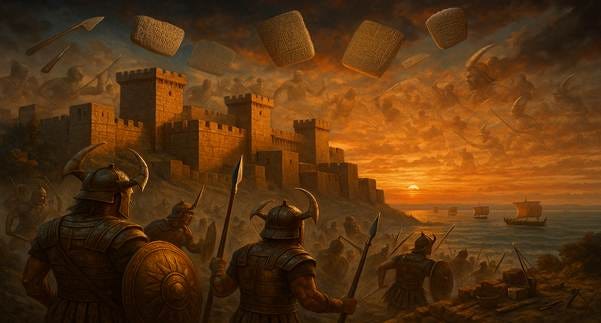The 220-Year Trojan War: How Homer Made It Achilles’ Story

What if everything we thought we knew about the Trojan War was wrong? What if the greatest story ever told wasn't about a single decade-long siege, but a masterful compression of over two centuries of bloody conflicts, royal betrayals, and ancient conspiracies that stretched from the palaces of Egypt to the bull-worshipping temples of Crete?
New evidence suggests Homer's Iliad ingeniously wove together 220 years of Mycenaean-Anatolian warfare (1420-1200 BCE), creating the illusion of a single war while actually chronicling the rise and fall of Bronze Age civilizations.
Revolutionary Discovery
King Priam may not have been a single ruler but a divine chronometer, like Zeus in mortal disguise, marking the passage of time as multiple Trojan kings were compressed into one legendary figure through oral tradition.
Through a groundbreaking synthesis of Hittite diplomatic records, Egyptian trade documents, and archaeological evidence from multiple destruction layers at Troy, this investigation reveals how the world's most famous war was actually the world's most brilliant historical compression, transforming centuries of geopolitical upheaval into a single, unforgettable narrative of heroes and gods.
In this article we explore:
Why Nestor couldn't possibly have fought in a single 10-year war
How Egyptian pharaohs secretly supported Greek raids on Troy
The mysterious "Taurotheoi" bull-worshipping cult linking Troy to Crete
Decoded Hittite tablets naming real Trojan kings behind the myth
Archaeological proof of multiple "Trojan Wars" spanning generations
Why Troy's fall coincided with history's first international conspiracy
Keep reading with a 7-day free trial
Subscribe to Ancient Origins UNLEASHED to keep reading this post and get 7 days of free access to the full post archives.

